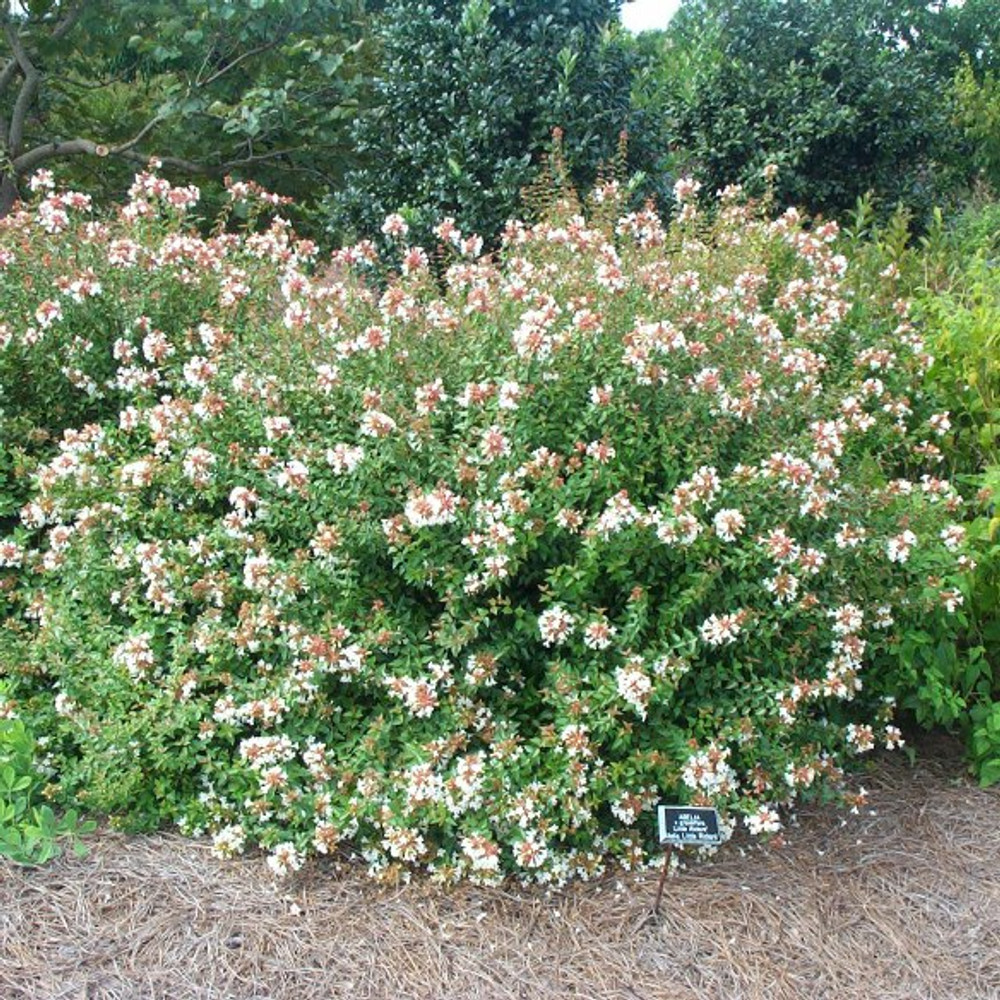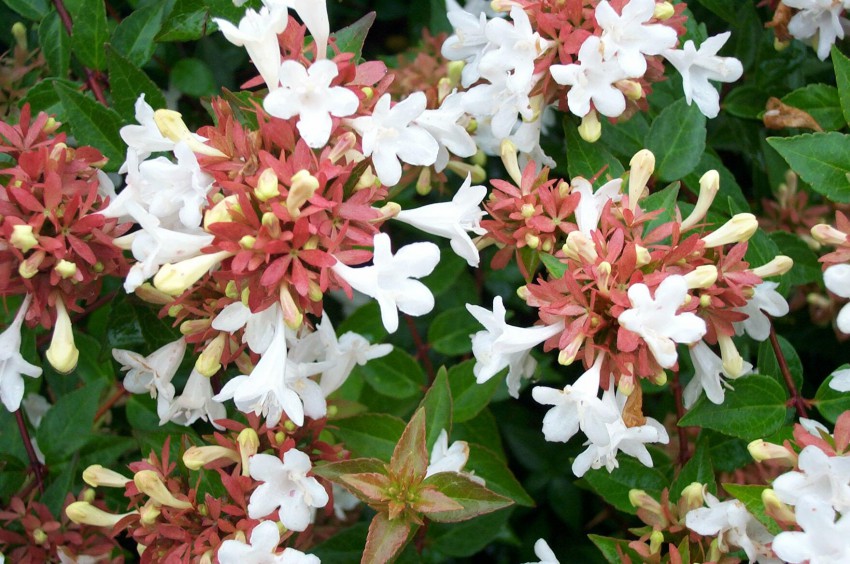Little Richard Abelia: The Perfect Shrub For Small Spaces
Title: Little Richard Abelia: The Perfect Shrub for Small Spaces
Introduction:
If you're looking for a small, yet beautiful shrub to add to your garden, look no further than Little Richard Abelia. This compact shrub is perfect for adding a touch of color and interest to small spaces, such as patios, walkways, and border gardens.
Little Richard Abelia grows to be about 2-3 feet tall and wide, with glossy green leaves that are edged in white. In the spring, the shrub produces clusters of small, white flowers that have a mild fragrance. The flowers attract butterflies and other pollinators, and they can be seen from a distance.
Little Richard Abelia is a low-maintenance shrub that is drought-tolerant and deer-resistant. It can be grown in full sun or partial shade, and it is hardy in USDA zones 6-9.
Main Content:
Here are some of the benefits of growing Little Richard Abelia:
- Small size: Little Richard Abelia is a compact shrub that is perfect for small spaces. It grows to be about 2-3 feet tall and wide, so it won't overwhelm your garden.
- Beautiful foliage: Little Richard Abelia has glossy green leaves that are edged in white. The leaves are semi-evergreen, so they will retain some of their color even in the winter.
- Abundant flowers: Little Richard Abelia produces clusters of small, white flowers in the spring. The flowers have a mild fragrance and attract butterflies and other pollinators.
- Low-maintenance: Little Richard Abelia is a low-maintenance shrub that is drought-tolerant and deer-resistant. It can be grown in full sun or partial shade, and it is hardy in USDA zones 6-9.
How to Care for Little Richard Abelia:
Little Richard Abelia is a relatively easy shrub to care for. Here are some tips:
- Plant in full sun or partial shade.
- Water regularly, especially during hot, dry weather.
- Fertilize once a year in the spring with a balanced fertilizer.
- Prune in the spring to shape the shrub and remove dead or damaged branches.
Where to Buy Little Richard Abelia:
Little Richard Abelia is available at most garden centers and online retailers. When purchasing a plant, look for one that is healthy and has no signs of pests or diseases.
Conclusion:
Little Richard Abelia is a beautiful and versatile shrub that is perfect for small spaces. It is easy to care for and adds a touch of color and interest to any garden. If you're looking for a small shrub that can add beauty to your garden, Little Richard Abelia is a great choice.
The Little Richard Abelia is a beautiful evergreen shrub that blooms with small white flowers in the late spring and early summer. It is a relatively fast-growing plant that can reach heights of up to 3 feet. The Little Richard Abelia is deer resistant and drought tolerant, making it a low-maintenance choice for gardeners in many climates.
If you are interested in learning more about the Little Richard Abelia, please visit Home Gardening. This website has a wealth of information about the plant, including its care requirements, planting instructions, and pest and disease control tips. You can also find photos of the Little Richard Abelia in bloom, as well as customer reviews.
FAQ of little richard abelia
- What is Little Richard Abelia?
Little Richard Abelia is a hybrid abelia that is known for its compact size, glossy leaves, and abundant white flowers. It is a fast-growing shrub that can reach up to 3 feet tall and wide. Little Richard Abelia is hardy in USDA zones 6-9 and can be grown in full sun or partial shade.
- How do I care for Little Richard Abelia?
Little Richard Abelia is a relatively easy plant to care for. It prefers well-drained soil and regular water. Fertilize it once a year in the spring with a balanced fertilizer. Little Richard Abelia is drought-tolerant and can withstand some neglect. However, it will bloom more profusely if it is watered regularly.
- When does Little Richard Abelia bloom?
Little Richard Abelia blooms in the summer, from June to September. The flowers are white and tubular, and they have a sweet fragrance. The flowers are followed by small, black berries.
- How do I propagate Little Richard Abelia?
Little Richard Abelia can be propagated by cuttings. Take 4-6 inch cuttings in the spring or summer. Remove the bottom leaves and dip the cuttings in rooting hormone. Plant the cuttings in a well-draining potting mix and keep them moist. The cuttings should root in about 4-6 weeks.
- Is Little Richard Abelia deer resistant?
Yes, Little Richard Abelia is deer resistant. This makes it a good choice for planting in areas where deer are a problem.
- Is Little Richard Abelia a good plant for hedging?
Yes, Little Richard Abelia is a good plant for hedging. It is a fast-growing shrub that can be easily trimmed to the desired shape. Little Richard Abelia is also tolerant of pruning, so you can keep it in check if it gets too large.
- What are some other good companion plants for Little Richard Abelia?
Some good companion plants for Little Richard Abelia include hydrangeas, roses, and salvias. These plants all have similar growing requirements and will complement each other well in a garden setting.
Image of little richard abelia
10 different images of Little Richard Abelia that are free to use:
- A small shrub with dark green leaves and clusters of white-tinged pink flowers.

- A close-up of the flowers, showing their bell-shaped shape and delicate pink coloring.

- A mature shrub with a spreading habit, covered in flowers.

- A row of Little Richard Abelia shrubs planted along a walkway, in full bloom.

- A Little Richard Abelia shrub in a pot, on a patio.

- A Little Richard Abelia shrub in a hedge, with other shrubs and flowers.

- A Little Richard Abelia shrub in a woodland garden, with other shade-loving plants.
- A Little Richard Abelia shrub in a pollinator garden, attracting butterflies and bees.

- A Little Richard Abelia shrub in a winter garden, with its leaves turned to a purplish-bronze color.

- A Little Richard Abelia shrub in a fall garden, with its leaves turning to a golden yellow color.

Post a Comment for "Little Richard Abelia: The Perfect Shrub For Small Spaces"